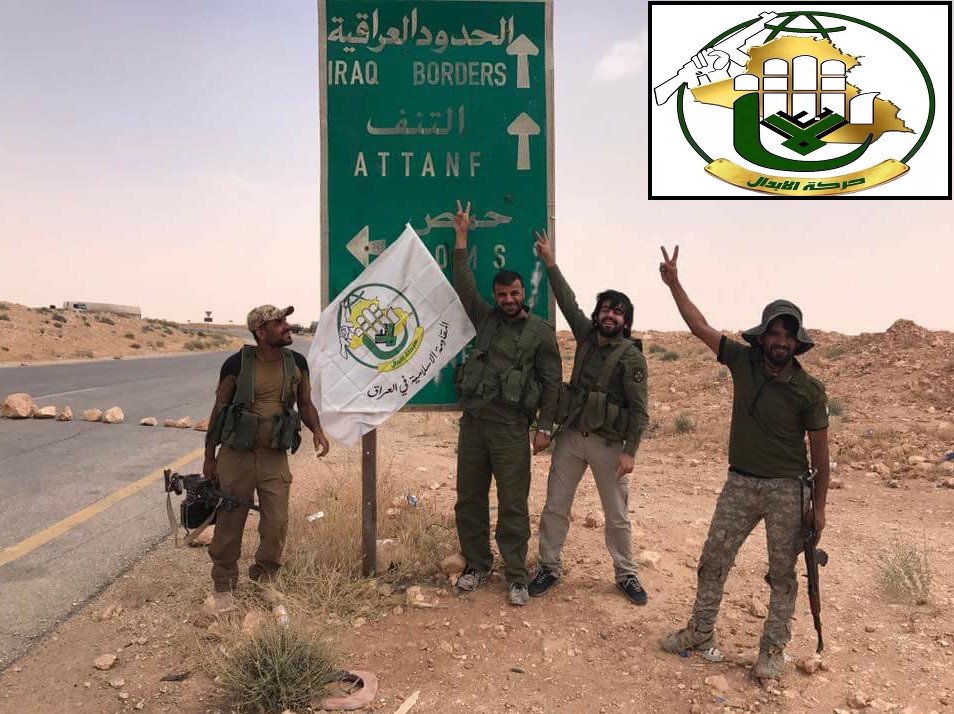Jura The idiot
General
let me see ... May 20, 2017
A showdown is looming between the US, Syria and Iran at Tanf

as right nowToday at 4:00 PM
and in the meantime Mr. Assad/Iran took it towards !Thursday at 8:54 PM
now that's the most recent:...
U.S. strikes Syria militia threatening U.S.-backed forces: officials
Thu May 18, 2017 | 2:38pm EDT
US Pitches Plan to Russia to Avoid Armed Conflict in Syria


both the above map and the picture inside the related blog by "Cassad"
A showdown is looming between the US, Syria and Iran at Tanf
U.S. aircraft over the weekend dropped a series of leaflets around the Tanf border crossing between Syria and Iraq, warning pro-Syrian regime militia to avoid the deconfliction zone around a small base there.
Officials at the Pentagon have acknowledged that pro-regime forces are active in the area and were conducting armed patrols in the vicinity of Tanf.
U.S. and British Special Forces use the facility to train Syrian opposition forces for the fight against ISIS, according to U.S. Central Command officials. The deconfliction zone encompasses a 55-kilometer radius around the base.
“These patrols and the continued armed and hostile presence of pro-regime forces inside the deconfliction zone are unacceptable and threatening to coalition forces,” said a CENTCOM official.
The massing of hundreds of pro-regime forces outside of Tanf was described as dangerous and a “direct threat” to coalition forces, by CENTCOM officials. It also sets up a potential showdown between the U.S. and forces aligned with Syrian President Bashar al-Assad.
With the pending liberation of the Syrian city of Raqqa by U.S.-backed Kurdish forces, elements of the Syrian regime and proxies allied to Iran have been jockeying for control.
Without any agreement between parties to the conflict in Syria on what to do with formerly held ISIS territory, confrontation becomes a likely avenue, said Fabrice Balanche, a leading French expert on Syria and a visiting fellow at The Washington institute for Near East Policy.
“The regime and its allies are racing to establish an east-west 'Shiite axis' from Iran to Lebanon, and the United States [is] seemingly looking to cement a north-south 'Sunni axis' from the Gulf states and Jordan to Turkey,” Balanche said.
The small group of U.S. and British Special Forces use the base in southern Syria, less than 10 miles from Jordan's border with Iraq and Syria, to train two vetted Syrian opposition groups, the Maghawir al-Thawra and Shohada al-Quartayn, according to officials in Baghdad.
Pentagon officials contend the primary mission of these groups is to take the fight to ISIS, although both groups have been associated with anti-regime efforts in the past, according to Jennifer Cafarella, a leading expert on the Syrian civil war at the Institute for the Study of War in Washington, D.C. These groups are remnants of the New Syrian Army, a band of former Syrian army defectors, and the Free Syrian Army, a formerly CIA backed anti-Assad force.
Ultimately, Syria is worried about the permanent presence of a U.S.-backed Syrian opposition group blocking a strategic route for the regime.
Over the weekend, members of the Katib Imam Ali, an Iraqi Shiite militia associated with Iran, positioned a large number of forces to include tanks and technicals — modified pickup trucks with mounted heavy machine guns — just outside the 55-kilometer zone.
Officials in Baghdad say they will use force to defend the installation where U.S. forces are operating.
“Coalition forces are prepared to defend themselves if pro-regime forces refuse to vacate the deconfliction zone,” said a CENTCOM spokesperson.
On May 18, pro-regime militias tested CENTCOM’s resolve, resulting in U.S. aircraft destroying a pro-regime tank and bulldozer after a convoy approaching Tanf refused to stop, according to Capt. Jeff Davis, a Pentagon spokesperson. The incident was followed up by a show of force by coalition jets that weekend, as some elements of the pro-regime convoy refused to leave the deconfliction zone.
The May 18 incident showcased that these militias may be attempting to build outposts just outside the deconfliction zone.
“We struck what appeared to be a firebase they were constructing, they had a bulldozer and a front-end loader used to create berms,” Davis said, describing the U.S. coalition strike against pro-regime militias on May 18.
The Iranian-backed militias don’t have the military capability to go toe-to-toe with U.S. forces at Tanf, however, the goal for Assad and his Iranian proxies may be to simply harass the facility and surround it, making the base useless for U.S. goals.
“The smart solution for Assad allies would be to encircle Tanf, the rebels would be unable to move outside Tanf and Tanf becomes useless, and dangerously useless for American forces,” Balanche told Military Times.
Iran has stepped up its efforts to open a land corridor through Iraq bridging its ally in Damascus while also connecting Iran to its proxy militant group, Hezbollah, in Lebanon.
On Monday, the Popular Mobilization Forces, an Iraqi Shia militia aligned with Iran, spearheaded its forces west though Kurdish-controlled Sinjar in Iraq — this operation has opened a direct link in northern Iraq to Kurdish controlled areas in northern Syria.
Movements by pro-regime and Iranian-backed militias in Iraq and Syria have sent a message to Washington that Iran and Syria are serious about opening these corridors, and they view the Tanf crossing as vital and strategic to their efforts.
How Washington will respond if Tanf is entirely encircled is unknown, but the area is "a potential powder keg," Cafarella said. "Mostly because I don't actually think we are committed to denying eastern Syria to Russia and Iran."

Last edited:



